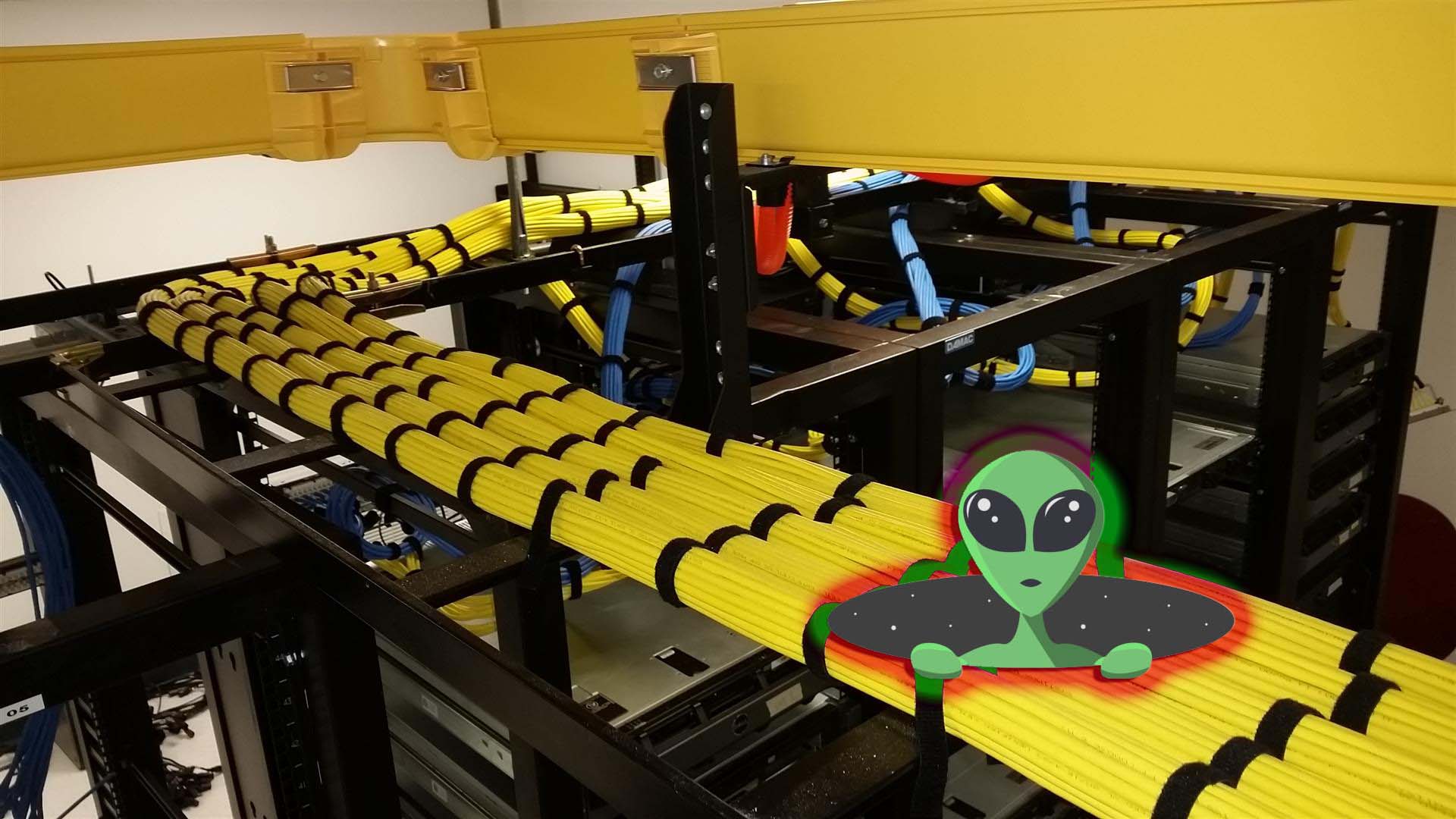We know tidy cables make the IT heart throb, and while looking like a slob is surely a no-no in cabling, could a little slob could help ward off alien cross-talk?"
Alien cross-talk? Never heard of it, oh wait...that's when the transmitted signal from the source induces unwanted signals onto an adjacent pair. No, that's near-end cross-talk (Next). It's at the other end, but no, that's far-end cross-talk (FEXT). Do they even test for that!? Regrettably, few contractors are knowledgeable about alien cross-talk (AXT) testing unless specifically requested to do so, which is more common in data centers and other high-data-traffic facilities. Unfortunately, many facilities unknowingly harbor aliens in their attics or beneath their floors, only becoming aware when the effects are felt.
On the plus side, if your facility is running a quality branded cat 6 250 MHz cable, the odds of aliens attacking are minimal at best. This is simply due to the frequency in which newer cables operate at to push more data, which requires higher frequencies, among other elements such as amount of twists, cable jacket thickness, distance of run, etc. Alien cross-talk really starts making an appearance around 350 MHz in frequency.
Alien cross-talk in communication cables refers to electromagnetic interference that occurs when signals from one cable unintentionally affect signals in nearby cables, not within the pairs, but throughout the cable. This can lead to signal degradation, data errors, and overall performance issues in the communication system in the same way as NEXT and FEXT does.
In this design, the six twisted pairs are arranged in a comb-like fashion around the central core wire. This configuration helps to minimize alien cross-talk by providing separation and additional shielding between the twisted pairs, thereby improving the overall signal integrity and reducing the risk of signal interference.
The use of a combed six-around-one configuration in Cat 6A cables is one example of how cable manufacturers and designers are constantly innovating to enhance the performance and reliability of structured cabling systems in high-speed data transmission environments.
Testing for alien cross-talk in structured cabling systems involves measuring the interference between cables in close proximity to each other. Here is a general procedure for testing alien cross-talk:
-
Equipment Preparation: Ensure that you have a certified alien cross-talk tester that is capable of measuring and analyzing cross-talk between cables.
-
Test Setup: Set up the cabling system with the cables you want to test for alien cross-talk. Make sure that the cables are installed as they would be in a typical networking environment.
-
Test Configuration: Connect the alien tester to the cables you want to test. Follow the manufacturer's instructions for setting up the tester and configuring the test parameters.
-
Perform Test: Initiate the test and allow the tester to analyze the cross-talk levels between the cables. The tester will measure and report the values for each cable pair.
-
Interpret Results: Review the test results to determine the cross-talk levels and identify any potential issues in the cabling system. Look for any pairs of cables that are experiencing high levels of interference.
-
Troubleshooting: If high levels of alien cross-talk are detected, troubleshoot the cabling system to identify the sources of interference. This may involve re-configuring the cables, adding shielding, adjusting cable spacing, or using other methods to reduce cross-talk.
-
Documentation: Document the test results and any actions taken to address issues. Keep records of the testing procedure and results for future reference.
By following these steps, you can effectively test for alien crosstalk in structured cabling systems and ensure optimal performance and reliability in high-speed data transmission environments.

